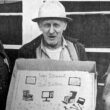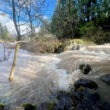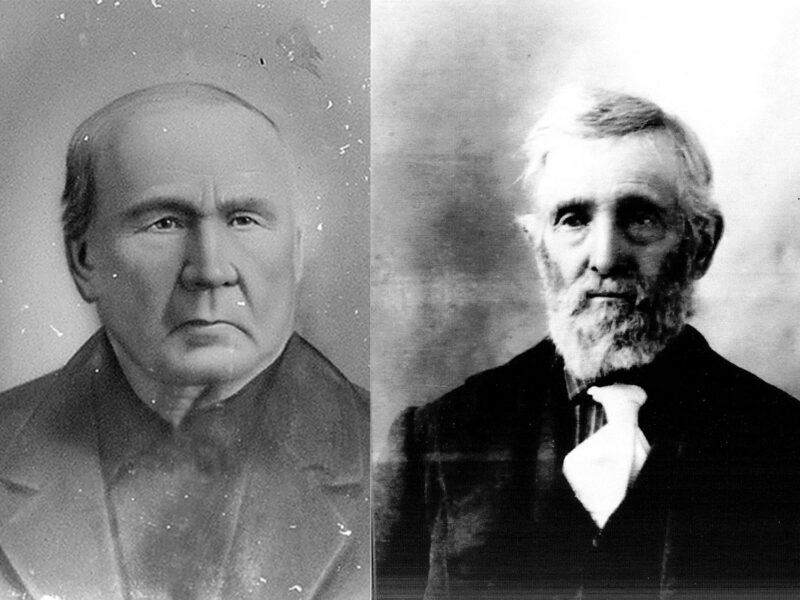By Roberta McKern
For The New Era
Mankind – pardon, “humankind” – has ever been inclined to go where the grass is greenest, whether it is on the far side of the hill or not.
Green grass stands for opportunity. In the histories of trails leading west it also has meant fodder for domesticated stock. Certainly this was true for those traveling on the Oregon-California Trail who set out toward the end of April or in early May when prairies to be crossed supported lush green grass.
It got patchy however, once the western mountains were reached.
Yet, here we are today looking around the East Linn Museum and celebrating the migrations of those who headed west about 200 years ago with green grass on their minds. They were part of the great Age of Discovery when men, generally Europeans, sailed off in improved ships to find new lands to claim for their kings and queens.
It didn’t matter that these claims would come as big surprises to people already in the lands, who had demonstrated ingenuity in developing their environment and were satisfied with what they knew and believed.
In 1492 Columbus was one of the first to start the trend – although in this hemisphere we are not universally called Columbians. Another, rather obscure, explorer got the honor of having us named “America” by getting his name, Amarigo Vespucci, on an early map. So much for that history lesson.
What we really are looking at are events that led up to the Oregon Trail, two of them being the Louisiana Purchase and the War of 1812 after the United States had been established.
In 1803 Napoleon wanted to continue vying with England as the dominant country in the world.
He needed money. At the same time our third president, Thomas Jefferson, wanted to buy New Orleans to keep American trade moving down the Mississippi River.
Having just lost an army, likely to yellow fever, in Haiti, Napoleon was ready to dicker. For $15 million he sold claims to 828,000 square miles of land to this new United States, doubling its size.
And so, Lewis and Clark were sent out to investigate flora, fauna, and native populations in this acreage, which notably did not extend to the Pacific. No extension yet of the United States “from sea to shining sea.”
That would come in the 1840s with lands ceded by Mexico after we went to war with that country. Also, thanks to travel on the Oregon Trail, the border of land claimed by us was determined, settling where the United States ended and Canada began.
Up to then Oregon country had had an uncertain relationship between Great Britain and the United States and an economy based on the beaver and fur trade, sea otters included.
Meanwhile, the War of 1812 intervened. The United States got involved because both Britain and France refused to trade with our country unless each had control. This closed American merchants out of many of their markets, aside from smuggling.
Plus, the British seized sailors considered English from ships they inspected, impressing them into the always needy British navy.
Also affecting western expansion, the British wanted to protect a profitable fur trade they kept with native Americans, mainly the Cherokee, Choctaw and Chickamauga. These Indians joined with the British to keep the western fringes of the United States ablaze which may be why Kentucky was called “dark and bloody ground.”
We know how the War of 1812 went. We got “the rocket’s red glare” and Beethoven wrote his 1812 overture celebrating Napoleon’s defeat in Russia with actual cannons fired at the end. Thanks to “General Winter” and freezing conditions encountered by poorly prepared armies, out of 500,000 men only around 30,000 of Napoleon’s troops survived.
Napoleon had a habit of losing armies.
European discord sent many people to America for refuge and the growing population fueled movements west, the Oregon immigration being one. Daniel Boone allegedly claimed those men going into the wilderness needed a good gun, a good horse and a good wife. He had to have a good wife because he spent a lot of time away from home.
A good wife was first on the list for many taking emigrant trails. Also needed were an ax, a saw, sharp knives and other working tools. Five and a half months of supplies were required on the Oregon-California roads, but too much meant discarding some along the way while an overabundance of optimism about hunting along the way could bring about shortage and dependence on others.
Organizations sprang up to advise travelers to Oregon and California.
Missionaries like Jason Lee, who had seen the Willamette Valley, added voice, too, to the desirability of the Valley’s land.
If we look at the people who contributed history to the East Linn Museum, we see they were not foreigners. They were American citizens moving to the frontier much as their forebears had been.
Andrew Wiley started his travels by leaving Virginia for the Midwest. Josiah Weddle had first seen the West as a seeker of California gold before returning back east to marry and start a family. He and his family sojourned in Texas during the Civil War before coming west.
Jess Barr, who married Anna from the Brownsville Kirk family, was a farmer who also worked for Richard Finley at his grist mill on the Calapooia.
After the Oregon Country’s boundary was clarified, this country’s offer of homesteads helped spur settlement in the area.
A factor definitely affecting development of Oregon was the geography through which the trail passed – prairies and mountains. The latter would bring great hardship to the less well prepared traveling west.
Discovery of gold in California and the resulting rush of men headed to gold fields altered settlement on the plains and prairies to the east of us as well as the discovery that cattle on the Great Plains survived there as well as in the Willamette Valley, once buffalo had been hunted out as regrettable disrespect to the earth in general.
For a time, the western plains on the east side of the Rockies were considered desert, which explains why settlement on the edges of the Pacific Ocean and in our valley, where grass grew tall and green looked better than finding a place near the mountains to farmers.
Andrew Wiley sponsored going from here east by getting lost in the Cascades, climbing a tree on Lost Prairie and spying the Santiam Pass. He subsequently encouraged cattle drives across the pass to bunch grass territory along the Deschutes River.
He was one of the promoters for the Santiam Wagon Road, a toll road across the pass.
Too, he and his wife operated one of the roadhouses alongside the road. General prices were 25 cents each to keep a horse for the night, with an additional 25 cents each time it was fed.
Did a horse get oats for dessert? Or an apple in season?
As the museum collection demonstrates, a focus by those headed here was not always on green grass. A 1905 census indicates nearly every man head of household called himself a farmer, but “green gold” was about to be discovered: the value of the surrounding forests.
A new type of homestead was being offered, one centered on lumber and minerals following the 160-acre pattern used on farm land.
If the green grass of fields was an allure, even bigger were the profits obtainable from 160 acres of prime timber.
But the old days of individual enterprise as it may be we’ve imagined it were fading because big timber interests, which had chopped and sawed their way through the forests of the upper Midwest, were ready to move this way.
Optimism and the hope for prosperity surged again just as it had for those pioneers loading Conestoga wagons while reading pamphlets (if they could read) about what they’d need to go gallivanting after rumors of greener grass.
The farming hamlet of Sweet Home was lucky if it counted 300 people in 1910. In the early 1930s, with the timber boom, the population had increased tenfold and housing was catch-as-catch-can.
Like many boom towns – whether oil, gold or an opportune growth in manufacturing as in wartime, chicken coops became shelters for those looking to work in the woods or sawmills of the timber industry.
We tend to look back with a certain amount of idealization of the times that have passed and to find a share of their optimism for finding greener and more opportune pastures. But a quick look at the Louisiana Purchase and the War of 1812 reveal life can have complexities we don’t expect.
So as we pursue our own travels, we might as well carry along the optimism of hope while being open to examples of history.





